|
The Woodland Education Centre |
|
|
The Woodland Education Centre |
|
Ecological Survey 2000
Autumn Cut Sections (1, 3 and 8)
| (Please note, the colour coding given
to each section description matches that of the Belt Transect
Diagram to aid understanding.) These
descriptions build upon the descriptions of the sections given in the 1999 ecological
survey and should be read in conjunction for maximum benefit. |
Section 1 - Observations 1999 - 2000
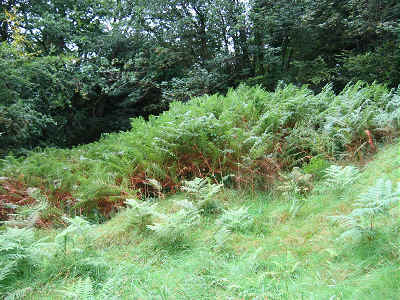 |
Section 1 continued to be dominated by grasses. Bracken had increased to become a dominant species in section 1. |
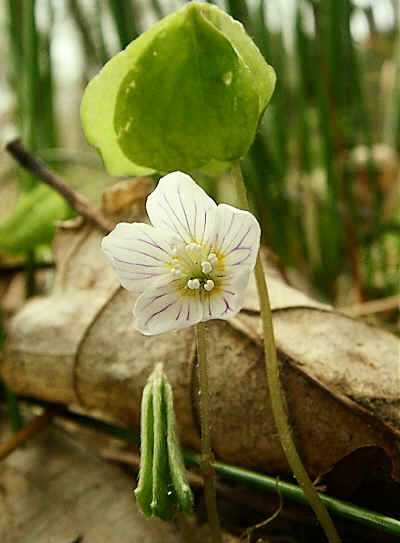 |
Wood Sorrel (left) had also become a dominant species in section1 over the
year. This is a typical woodland species and its abundance in this section illustrates the influence of the adjacent woodland. Mosses, especially Eurhynchium praelongum, had also increased in abundance. |
Section 3 - Observations 1999 - 2000
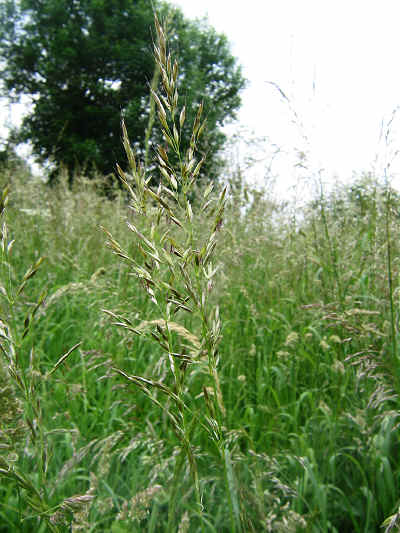 |
False Oat Grass (left) became a dominant species in this section. Raspberry, which was not recorded previously, had also become a dominant species.
|
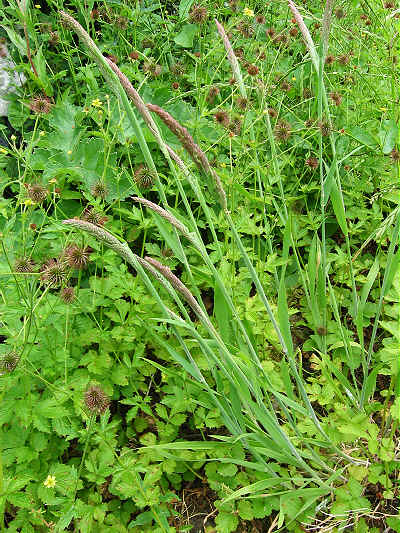 |
Yorkshire Fog (grass - left) decreased slightly in abundance in both sections 3 and 8. |
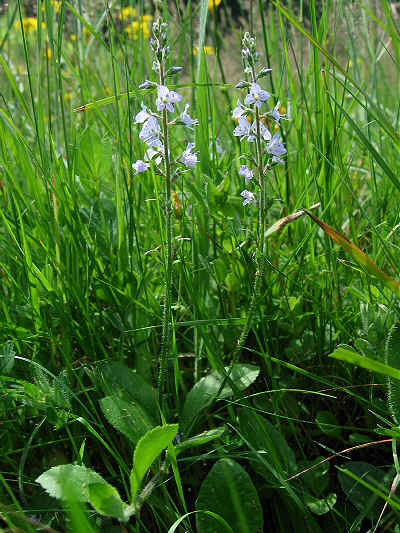 |
Heath Speedwell (left), Bugle and Hedge Woundwort (Hedge Woundwort had doubled) had
all become dominant species in section 3. These species were either absent or not abundant in the other two autumn cut sections. |
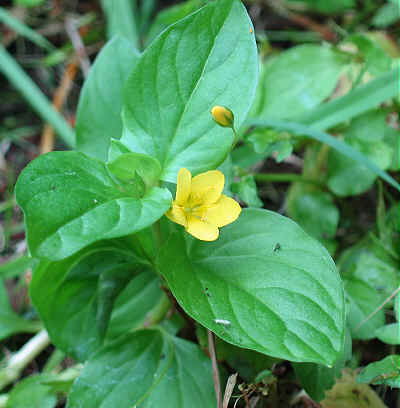 |
Yellow Pimpernel (left) remained a dominant species in section 3, while decreasing to zero in the
other autumn cut sections. Yellow Pimpernel favours damp habitats such as woodland rides, ditches and stream sides, on mildly acid soils. |
Section 8 - Observations
1999 - 2000
(Autumn cut plus initial general 'weed' control)
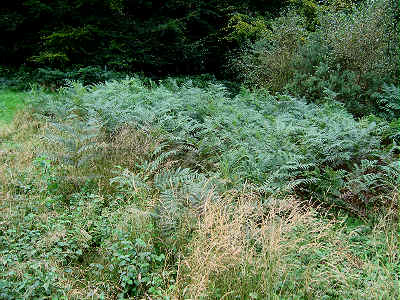 |
The bottom third of the section was dominated by Bracken and Yorkshire Fog (left). Bracken had doubled in
the section. In the higher parts of the section, there was very little Yorkshire Fog. Velvet Bent was instead the dominant grass species. Velvet Bent had doubled its abundance in the section over the preceding year. |
 |
The amount of Heather (left) recorded in the sampled quadrats decreased substantially in
this section. This may have been due to the extremely patchy nature of the distribution of the Heather within the section. The position of the majority of the quadrats sampled was randomly determined and chance may have dictated that most of the quadrats fell outside areas of Heather growth. Large amounts of Heather and Bell Heather were noted in some areas in general observations of the section. |
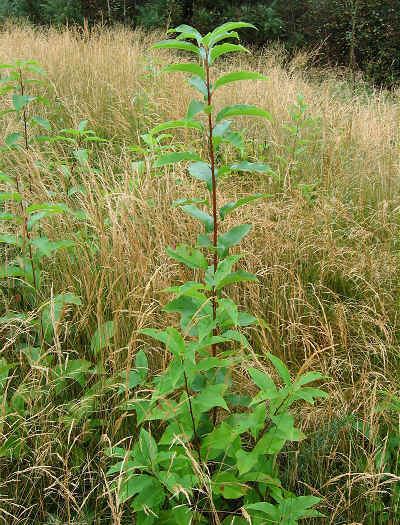 |
Cherry had increased in abundance to become a dominant species in section 8. Sedges were also very prominent in the upper part of the section, especially Wood Sedge. |
Dominant Plants in
Autumn Cut Sections in 2000
with figures from 1999 for comparison.
Characteristic heath species
are in bold print
A + sign indicates the species was present, but not recorded in the quadrats.
| Species | Section 1 | Section 3 | Section 8 | |||
| Overall % frequency (mean % cover in brackets) | 2000 | 1999 | 2000 | 1999 | 2000 | 1999 |
| Yorkshire Fog | 100 (36) | 100 (31) | 93 (18) | 100 (32) | 42 (9) | 67 (17) |
| Common Bent | 100 (58) | 95 (56) | 97 (41) | 94 (43) | 66 (7) | 83 (9) |
| Eurhynchium praelongum | 93 (60) | 81 (43) | 90 (54) | 65 (19) | 85 (30) | 72 (33) |
| Bramble | 75 (12) | 76 (14) | 61 (15) | 65 (20) | 38 (5) | 33 (4) |
| Bluebell | 72 (6) | 71 (17) | 82 (13) | 60 (8) | 0 | + |
| Thuidium tamarascinum | 68 (27) | 67 (17) | 11 (2) | 30 (10) | 56 (12) | 78 (24) |
| Polytrichum formosum | 29 (7) | 29 (6) | 0 | 5 (0.1) | 52 (23) | 67 (45) |
| Bracken | 22 (15) | 19 (10) | 4 (0.5) | 15 (6) | 12 (5) | 6 (2) |
| Wood Sorrel | 22 (1) | 5 (0.2) | 0 | 0 | 0 | 0 |
| Silver Birch | 18 (2) | 19 (2) | 14 (3) | 10 (2) | 30 (4) | 33 (8) |
| Common Dog-violet | 18 (1) | 5 (0.4) | 90 (40) | 65 (24) | 30 (3) | 28 (3) |
| Hypnum jutlandicum | 15 (2) | 5 (0.2) | 11 (2) | 0 | 59 (15) | 39 (8) |
| Heath Woodrush | 4 (0.5) | 14 (2) | 4 (0.3) | 10 (2) | 41 (7) | 33 (4) |
| Wood Sedge | 4 (0.5) | 5 (1) | 32 (5) | 20 (6) | 59 (21) | 11 (2) |
| False Oat Grass | 0 | 0 | 25 (9) | 5 (1) | 0 | 0 |
| Raspberry | 0 | 0 | 25 (7) | 0 | 0 | 0 |
| Heath Speedwell | 0 | 0 | 36 (4) | 20 (3) | 12 (5) | 0 |
| Bugle | 0 | 0 | 29 (5) | 20 (4) | 12 (0.2) | 6 (0.5) |
| Cherry | 0 | 5 (0.5) | 0 | 15 (2) | 34 (2) | 22 (3) |
| Hedge Woundwort | 0 | 0 | 61 (19) | 25 (8) | 0 | 0 |
| Velvet Bent | 0 | 10 (3) | 25 (7) | 50 (14) | 93 (52) | 39 (6) |
| Yellow Pimpernel | 0 | 5 (0.5) | 32 (4) | 40 (4) | 0 | 17 (0.5) |
| Greater Bird's-foot Trefoil | 0 | 0 | 47 (18) | 45 (12) | 0 | 0 |
| European Gorse | 0 | 0 | 15 (2) | 10 (5) | 70 (26) | 72 (25) |
| Heather | 0 | 0 | 0 | 0 | 19 (11) | 61 (19) |
| Slender St. John's-wort | 0 | 0 | 7 (0.5) | 20 (1) | 74 (9) | 61 (5) |
| Percentage frequency = the percentage of the total number of quadrats sampled over the whole site which contain the species. For example, a percentage frequency of 100%, means that the species was found in all quadrats sampled. |
>> Continue to Spring, Summer and Autumn Cut Section
Ecological Survey 2000 |